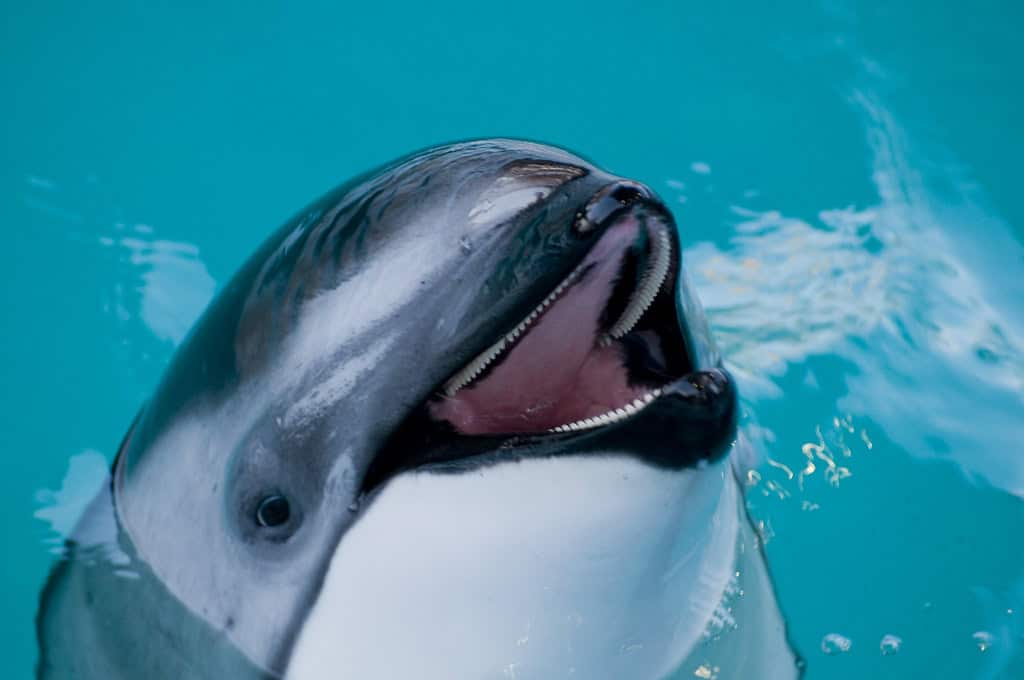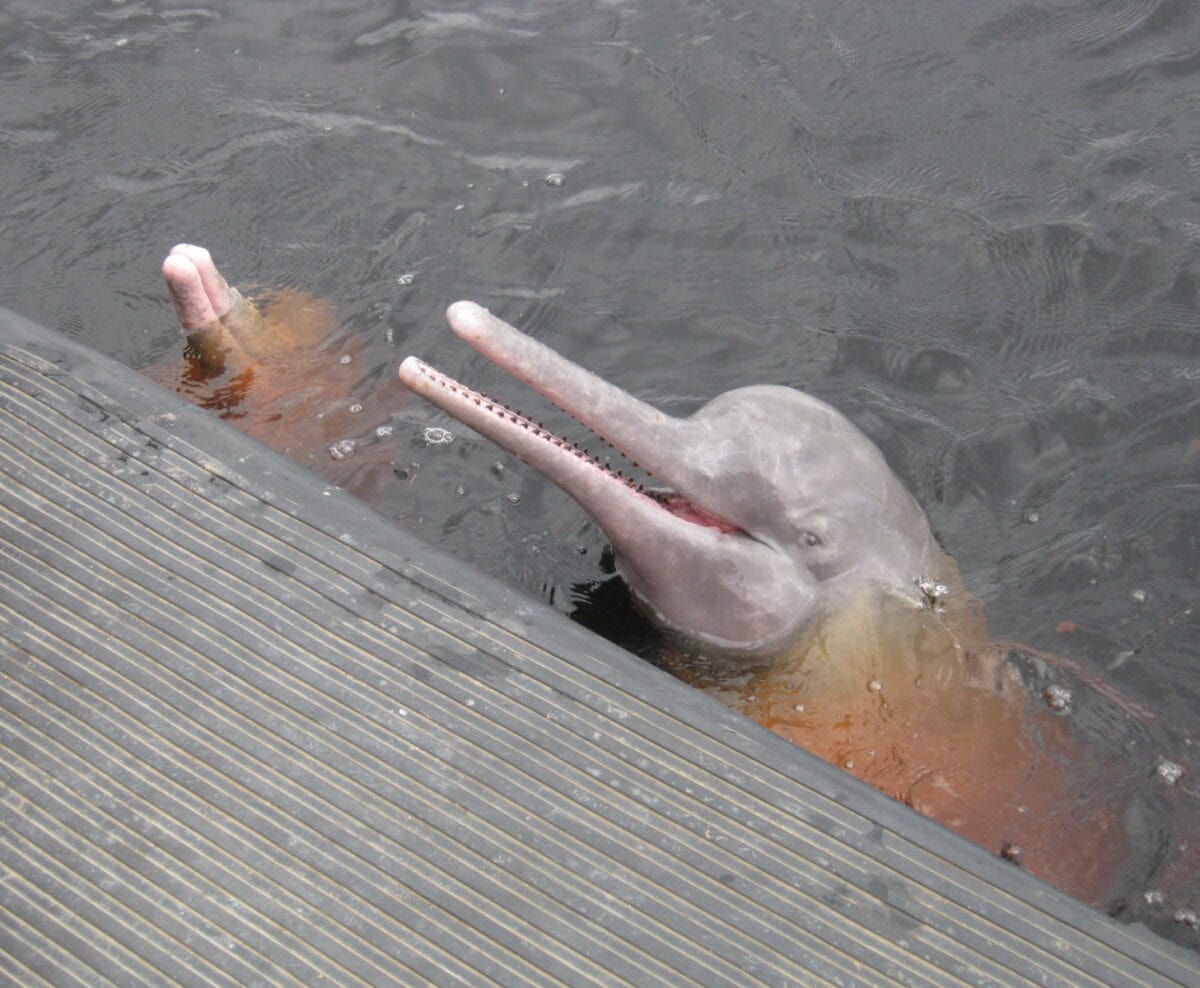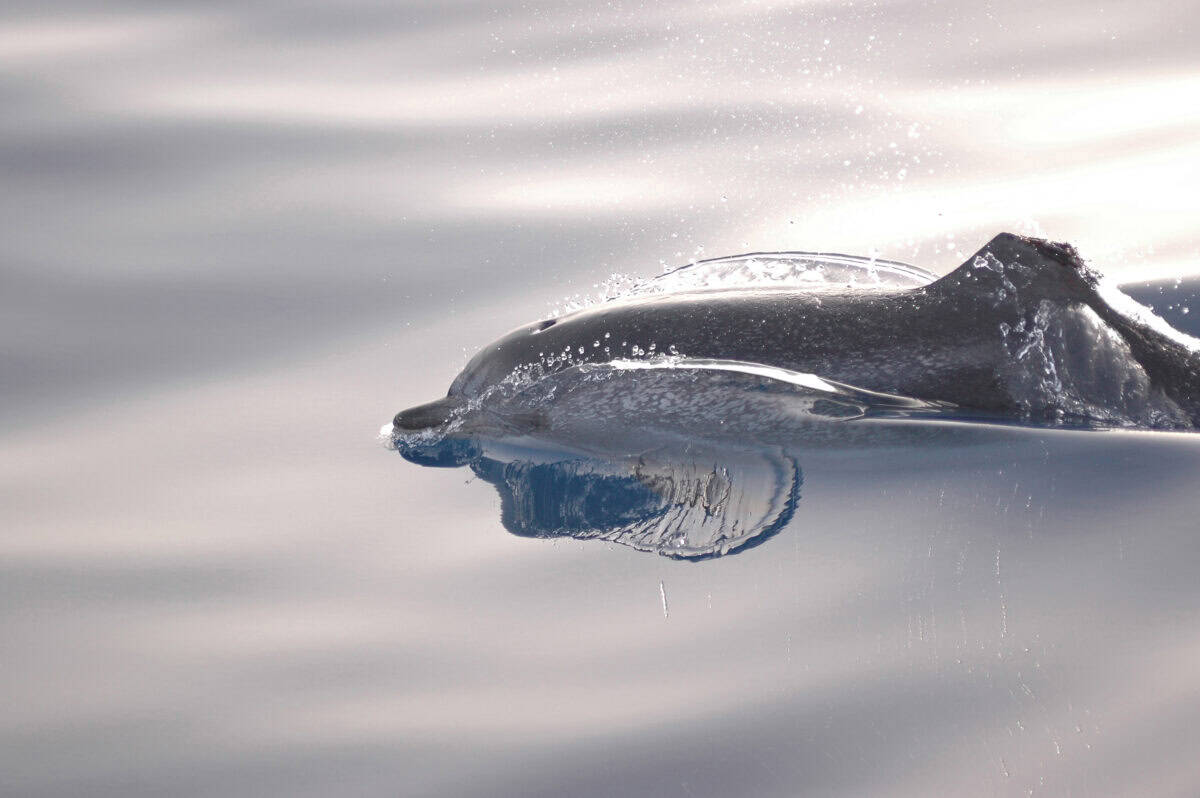The perpetually upturned mouths of dolphins have captivated humans for centuries, creating an emotional connection that transcends species barriers. That seemingly friendly “smile” has helped make dolphins among the most beloved marine mammals on Earth. However, this perceived expression of joy represents one of the most widespread misconceptions about these intelligent creatures. The truth behind the dolphin smile reveals a fascinating intersection of biology, psychology, and the human tendency to project our own emotions onto animals. Understanding the reality behind this facial feature not only provides insight into dolphin anatomy but also illuminates how our emotional responses to animals shape our perceptions and relationships with wildlife.
The Anatomy Behind the “Smile”

What appears to be a permanent smile on a dolphin’s face is actually an anatomical feature rather than an emotional expression. Dolphins possess a fixed facial structure where their rostrum (snout) and jawline naturally curve upward at the edges, creating what humans perceive as a smile. This physical characteristic is present regardless of the animal’s emotional state or situation. Unlike humans, whose facial muscles allow for a wide range of expressions, dolphins have limited facial mobility and cannot change their “expression” to reflect their internal emotional state.
This fixed anatomical feature serves important biological functions related to feeding and echolocation rather than emotional communication. The shape of their mouth enables efficient prey capture and provides optimal positioning for their specialized teeth. Additionally, this structure contributes to the hydrodynamics of their bodies, allowing them to move efficiently through water while maintaining the ability to capture prey and vocalize. The smiling appearance is simply a byproduct of evolutionary adaptations that have nothing to do with expressing happiness.
Anthropomorphism: Projecting Human Emotions

The interpretation of a dolphin’s fixed facial feature as a “smile” represents a classic case of anthropomorphism – the attribution of human characteristics to non-human entities. Humans have a natural tendency to project their own emotional states and expressions onto animals, particularly those with features that resemble human expressions. This psychological phenomenon occurs because humans are highly social beings who rely heavily on facial expressions for emotional communication. When we see features that resemble our own expressions, we instinctively assign similar meanings to them.
Anthropomorphism serves as a cognitive shortcut that helps us relate to and form bonds with other species. While this tendency can foster empathy and conservation efforts, it can also lead to misunderstandings about animal behavior and needs. In the case of dolphins, the perception of a permanent smile has contributed to their portrayal in popular culture as perpetually happy, friendly creatures – an oversimplification that doesn’t accurately represent their complex emotional lives and behaviors.
How Dolphins Actually Express Emotions

While dolphins don’t express emotions through smiles, they do have sophisticated ways of communicating their emotional and mental states. Body language plays a crucial role in dolphin communication – behaviors such as leaping, tail slapping, jaw clapping, and various swimming patterns can indicate excitement, aggression, playfulness, or distress. The intensity and frequency of these movements often correlate with their emotional arousal level. Physical contact between dolphins, including rubbing against each other, is another important indicator of social bonds and emotional states.
Vocalizations represent another primary channel for emotional expression in dolphins. They produce an extensive repertoire of sounds, including whistles, clicks, and burst-pulsed sounds, each potentially conveying different emotional information. Each dolphin even develops a unique “signature whistle” that functions similar to a name and may be used differently depending on their emotional state. Research has shown that these vocalizations vary in pattern, frequency, and intensity based on context and likely emotional state, providing a sonic window into their internal experiences that goes far beyond their fixed facial features.
The Dark Side of the “Smile”

The misinterpretation of the dolphin’s fixed facial structure as a permanent smile has had serious consequences for these marine mammals. This perceived expression has contributed significantly to their popularity in entertainment industries, particularly marine parks and dolphinariums, where they’re often presented as constantly happy performers. However, this interpretation obscures the stress, behavioral abnormalities, and health issues that captive dolphins frequently experience. The “smile” creates a deceptive impression that these animals are thriving in captivity when research indicates they often suffer from stress-related illnesses and shortened lifespans.
Conservation efforts can also be complicated by the misleading perception of perpetually happy dolphins. The charming “smile” may lead the public to underestimate threats facing wild dolphin populations, including habitat destruction, pollution, fishing gear entanglement, and climate change. When we view dolphins through the lens of their seemingly cheerful expression, we may be less likely to recognize signs of distress in wild populations or feel the urgency to address conservation concerns. The disconnect between appearance and reality potentially hampers conservation messaging and public engagement with protection efforts.
The Science of Dolphin Cognition and Emotion

Scientific research has established that dolphins possess highly developed brains and sophisticated cognitive abilities. Their brain-to-body mass ratio ranks among the highest in the animal kingdom, second only to humans. Studies have demonstrated their capacity for self-awareness (they can recognize themselves in mirrors), complex problem-solving, tool use, cultural learning, and the ability to understand symbolic language systems. These cognitive abilities suggest that dolphins experience rich emotional lives, though these experiences may differ significantly from human emotions.
Neurobiological evidence supports the presence of emotional experiences in dolphins. Their brains contain structures associated with emotional processing, including a well-developed limbic system. Dolphins show physiological responses to different situations that correspond with emotional states, such as changes in heart rate and stress hormone levels during potentially threatening or exciting events. While the scientific community continues to study and debate the nature and range of dolphin emotions, there is growing consensus that these animals experience complex emotional states beyond simple reflexive responses – emotional experiences that have nothing to do with their fixed “smile.”
Cultural Representations and Misconceptions

The dolphin’s perceived smile has permeated human culture for centuries, appearing in ancient artwork, literature, and modern media. From Ancient Greek vase paintings to contemporary animated films, dolphins are consistently portrayed as friendly, helpful creatures with permanent smiles. These cultural representations have reinforced the misconception that dolphins are perpetually happy and benevolent toward humans. Popular culture rarely acknowledges that wild dolphins can display aggression, territorial behavior, and complex social dynamics that don’t align with their seemingly cheerful appearance.
This cultural misrepresentation extends to spiritual and New Age contexts, where dolphins are often elevated to the status of spiritual guides or enlightened beings, largely based on their appearance and observed intelligence. The smiling visage has contributed to a romanticized view of dolphins that sometimes overlooks their true nature as wild predators adapted to their ecological niche. While dolphins are indeed remarkable animals worthy of admiration, the cultural mythology surrounding them has been significantly shaped by misinterpretations of their facial anatomy.
The Psychology Behind Our Attraction to “Smiling” Animals

Humans demonstrate a strong psychological attraction to animals that appear to be smiling or displaying positive expressions. This preference is rooted in several psychological mechanisms, including the activation of our nurturing instincts and the release of oxytocin, often called the “bonding hormone.” Studies in human psychology have shown that seeing what we perceive as a smile – even in non-human animals – can trigger positive emotional responses in our brains, including feelings of warmth, trust, and connection. This response happens automatically and often unconsciously, explaining why we’re drawn to animals like dolphins.
This psychological phenomenon may have evolutionary roots. Humans evolved as highly social creatures who rely on facial expressions to gauge others’ intentions and emotional states. A smile typically signals friendliness and lack of threat, so we’re neurologically wired to respond positively to smile-like features. When we see dolphins with their apparent smiles, we instinctively categorize them as friendly and safe, which facilitates positive interactions. This psychological bias toward smiling faces extends beyond dolphins to other animals with similar features, helping explain why certain species become particularly beloved in human culture.
Ethical Implications of Misinterpreting Animal Expressions

Misinterpreting animal expressions raises significant ethical concerns, particularly regarding welfare standards and conservation priorities. When we project human emotions onto animals based on their appearance rather than understanding their actual behavioral needs, we risk making decisions that fail to address their true requirements for wellbeing. In the case of dolphins, the persistent myth of their happiness, reinforced by their “smile,” has been used to justify keeping them in captivity for entertainment, despite evidence that such environments often fail to meet their complex physical and psychological needs.
At a broader level, this misinterpretation creates a hierarchy of conservation concern where animals that appear “happy” or otherwise emotionally relatable to humans receive disproportionate attention and resources. Species that don’t have features resembling human expressions may receive less public support and funding, regardless of their ecological importance or conservation status. A more ethical approach involves making conservation and welfare decisions based on scientific evidence about animal needs and ecological importance rather than on which species trigger our emotional responses through anthropomorphized interpretations of their appearance.
Dolphin Communication Beyond the “Smile”

Dolphins possess one of the most sophisticated communication systems in the animal kingdom, far more complex than what their fixed facial features might suggest. They use a multi-modal approach to communication that integrates acoustic signals, body movements, touch, and possibly even chemical signals. Their acoustic communication includes a range of specialized sounds – clicks for echolocation, signature whistles that function as names, and burst-pulse sounds that may convey emotional information. This acoustic language allows them to coordinate hunting activities, maintain social bonds, and navigate their environment with remarkable precision.
Research has revealed extraordinary aspects of dolphin communication that demonstrate their cognitive sophistication. They can mimic sounds they hear, including human speech patterns, and some studies suggest they may understand symbolic representations and artificial languages created by researchers. Dolphins also engage in synchronized swimming and coordinated hunting that requires complex communication and planning. Understanding these sophisticated communication methods provides a much more accurate window into dolphin cognition and social life than focusing on their seemingly smiling faces, which play virtually no role in how they actually express themselves to conspecifics.
Responsible Education and Tourism

Education plays a crucial role in correcting misconceptions about dolphin expressions and behavior. Responsible wildlife education programs should emphasize the biological reality behind the dolphin’s facial structure while highlighting the actual ways these animals communicate and express emotions. By teaching the public about dolphin biology, cognition, and behavior based on scientific evidence rather than anthropomorphic interpretations, educators can foster a deeper and more authentic appreciation for these remarkable marine mammals that goes beyond their appealing appearance.
The tourism industry bears particular responsibility in this educational effort, as dolphin encounters represent a significant segment of wildlife tourism. Ethical tourism operations should prioritize education about natural dolphin behavior and conservation issues over perpetuating the myth of perpetually smiling, happy animals. This means avoiding language and marketing that emphasizes the dolphin “smile” and instead focusing on respectful observation of natural behaviors in appropriate settings. Responsible tourism can help shift public perception from seeing dolphins as smiling entertainers to understanding them as complex wild animals deserving of respect and conservation.
Cultivating Authentic Connections with Wildlife

Moving beyond the misconception of the dolphin smile opens opportunities for more authentic connections with these and other animals. Rather than projecting our own emotions onto wildlife based on physical features that resemble human expressions, we can develop appreciation based on understanding animals on their own terms. This approach involves learning about species’ natural behaviors, ecological roles, communication methods, and actual emotional capacities as revealed through scientific research. Such knowledge allows us to connect with animals based on who they truly are rather than who we imagine them to be.
This shift toward authentic connection has practical implications for how we interact with wildlife. It encourages observation over interaction, respect for natural behaviors over performances, and protection of natural habitats over artificial enclosures. For dolphins specifically, it means appreciating their remarkable intelligence, social complexity, and hunting prowess rather than focusing on their seemingly friendly appearance. This more informed perspective ultimately creates a richer, more meaningful relationship between humans and wildlife that benefits both our understanding of the natural world and the welfare of the animals themselves.
Conclusion: Beyond the Illusion of the Smile

The dolphin’s “smile” represents a powerful lesson in how our human perception shapes our understanding of and relationship with the natural world. By recognizing that this seemingly joyful expression is actually a fixed anatomical feature rather than an emotional display, we take an important step toward seeing dolphins – and by extension other animals – more clearly and accurately. This understanding doesn’t diminish the wonder and connection we feel toward these extraordinary marine mammals; rather, it deepens our appreciation by grounding it in biological reality rather than anthropomorphic projection.
Moving beyond the illusion of the dolphin smile opens the door to a more nuanced and respectful relationship with wildlife based on scientific understanding rather than wishful thinking. It encourages us to appreciate dolphins for their actual remarkable qualities – their intelligence, social complexity, communication abilities, and evolutionary adaptations – rather than for imagined similarities to human expressions. By letting go of the misconception of perpetually smiling dolphins, we make space for something more valuable: authentic connection with and appreciation for these animals as they truly are, not as we wish them to be.
- 13 Ways to Keep Your Indoor Cat Entertained - August 17, 2025
- How This Giant Predator Ruled the Ocean 200 Million Years Ago - August 17, 2025
- Pterosaurs Had Fur, Not Feathers - August 17, 2025

